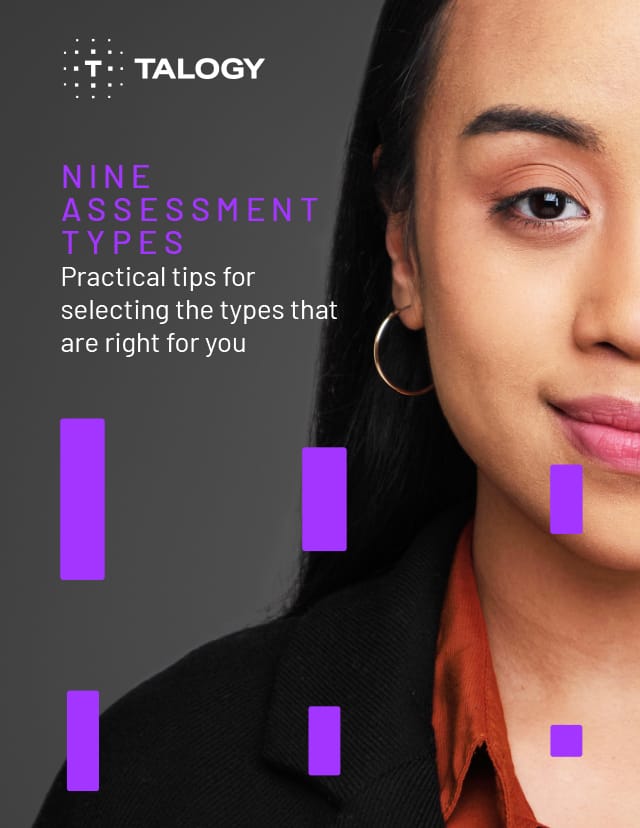Written by Alexander Hamilton, R&D Analyst
Imagine this: You’ve hired someone with an impressive CV, a charming interview presence, and glowing references. Six months later, your team is covering for their underperformance, morale is down, and you’re back to square one of trying to fill that position. So, what did you do wrong? This is a scenario every manager dreads, and bad hires happen more often than we’d like to admit. That’s because traditional hiring methods often overlook one crucial element that could make all the difference: psychometric testing.
Psychometric testing might sound like something reserved for academic researchers, but it’s actually one of the most powerful tools available to organisations today. When used correctly, it helps you hire smarter, promote more effectively, and develop talent with true precision. Let’s explore what a psychometric test is and why it should matter to you.
What is a psychometric test?
According to the Open University, psychometrics is “an area of psychology devoted to psychological measurement and the construction of questionnaires and tests, which assess people’s knowledge, attitudes, personality traits or mental ability.” In plain terms, a psychometric test is how we measure and analyse things that can’t be seen and are not easily identifiable like intelligence, personality, and potential.
The history of psychometrics
Sir Francis Galton, often called the father of psychometrics, defined it as “the art of imposing measurement and number upon operations of the mind.” In his studies on the inheritability of intelligence and general success, Sir Francis Galton needed a way to reliably and accurately quantify traits like intelligence so they could be studied, tracked, and understood across generations. And voila, the first psychometric test was born.
One of the earliest large-scale applications of psychometrics came during World War II. The U.S. government needed a fast, objective way to place soldiers in roles that matched their abilities, so they turned to psychometric testing to help. One such test was The Army General Classification Test (AGCT). The AGCT ultimately helped the U.S. government successfully place over 12 million soldiers into suitable roles within the military during this pivotal time in world history.
Fast forward to today, psychometric testing is embedded in many aspects of life such as certification and licensing exams. But perhaps the most transformative role of psychometric tests is its role in the modern workplace.
What are the benefits of using psychometric tests in today’s workplace?
Instead of relying on gut feeling, psychometric testing brings structure, fairness, and data into the hiring decision-making process. It allows organisations to measure critical attributes like cognitive ability, personality, emotional intelligence, problem-solving, etc. with a scientific method.
The benefits of psychometric tests in hiring
Psychometric testing provides answers to vital questions throughout the hiring process that you can’t get from a resume or interview such as:
- Who has the highest potential for this leadership role?
- How do we fairly assess candidates when we do not want to rely on experience alone?
- Which one of the many highly qualified applicants should I pick?
- How will I know which applicant will excel in a client-facing role?
Where to apply psychometric testing in the workplace?
Here’s how psychometric testing supports organisations in making better people decisions:
1. Recruitment and selection
Psychometric testing can be used to help organisations identify candidates who not only have the knowledge, skills, abilities, and other characteristics (KSAOs) to do the job, but are likely to thrive in it. It can be designed to screen for things like motivational fit, culture fit, and behavioural tendencies.
2. Leadership development
Use psychometric assessments to discover high potential individuals and those with leadership potential. It can also be used to provide unique insight and feedback for current leaders within your organisation.
3. Succession planning
Create data-informed leadership pipelines to properly position those high potential employees for roles that best suit them and will help move the company forward. Assess competencies that not only align with the current state of the role, but also the anticipated organisational needs of the future to improve your succession planning strategy.
4. Employee development and skills gaps
Psychometric tests identify the current knowledge, skills, abilities, and other characteristics of an employee so you can then take it one step further and see how that stacks up to the established requirements of the given role. This can help to create a tailored employee development plan that addresses any skills gaps where they may be lacking and identifies which trainings may be the most beneficial.
Psychometrics: The standard for strategic talent decisions
Psychometric testing isn’t about replacing human judgement, it’s about enhancing it. Psychometrics bring consistency and fairness – two critical components of any people-related process – to talent decisions. A psychometric test helps organisations identify measurable insights to make smarter, faster, and more equitable choices.
So, the next time you’re facing a tough hiring or promotional decision, ask yourself: What might a psychometric test reveal to guide me to the best result?
About the author: Alex Hamilton is an industrial/organisational psychologist with a master’s degree in industrial/organisational psychology from Texas A&M University at College Station. He has experience designing, validating, and interpreting psychometric assessments. While his expertise spans a broad range of topics within the discipline, Alex is particularly passionate about exploring the practical applications of psychological principles to enhance workplace dynamics and employee wellbeing. At Talogy, his role focuses on developing and maintaining innovative, valid selection assessments for roles in various industries, including manufacturing, healthcare, and service.



